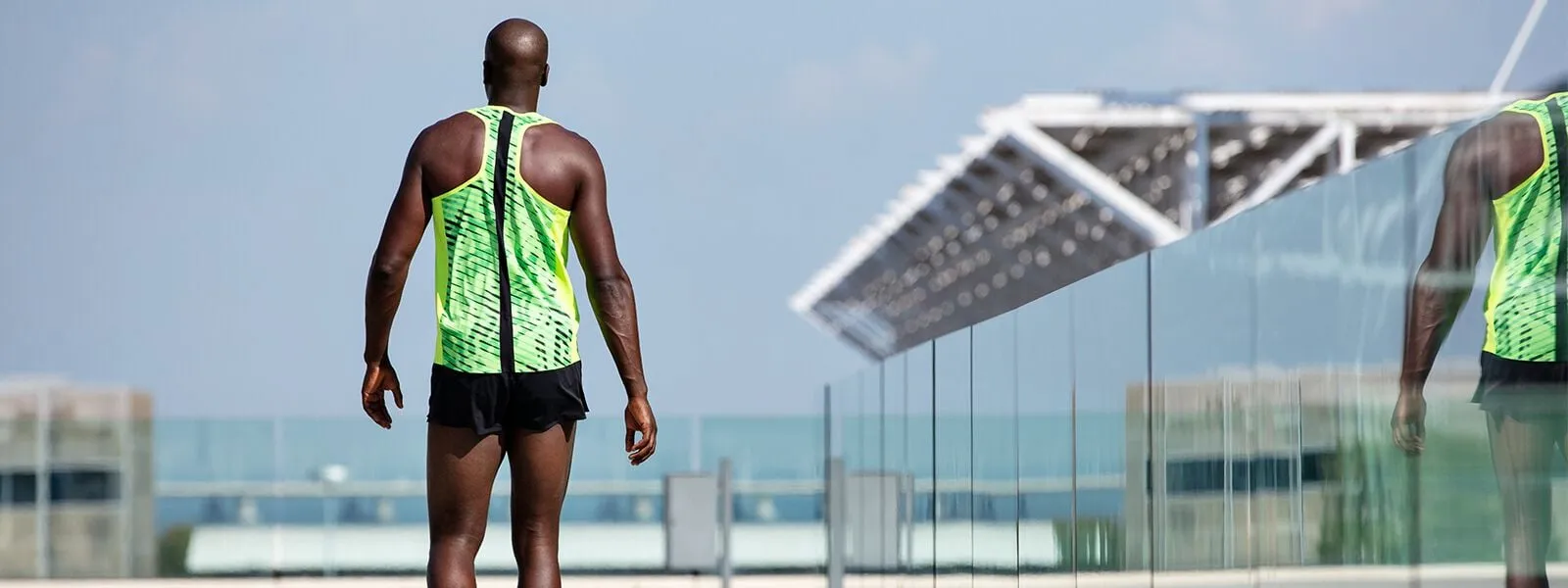
Nine ideas for how to increase stamina for running
October 28, 2020
One of the most exciting things about running is the fact that, with time and effort, most people can improve their running stamina. But the ability to go further and faster won’t happen if you just do the same kind of training over and again - you’ll need to introduce different kinds of exercises to increase your stamina.
In this guide, we’re going to take a look at nine different ways to increase your stamina for running. Many of the techniques feature running-based exercises, but there are also a few stamina-building strategies that use alternative methods.
But before exploring how to build stamina for running, it’s helpful to have an understanding of what exactly stamina is - and what it’s not.
What is stamina?
A simple definition of stamina is: the physical or mental energy needed to do a tiring activity for a long time.
If you’ve been running for a while, you can probably already see that you can run further and longer than when you started. This shows how your stamina has increased.
But what’s actually happening in your body to allow you to do tiring activities for longer? The process of building stamina is quite complex, but essentially two things are happening:
- Heart stamina: When you exercise, your heart pumps blood to your muscles to deliver oxygen and release energy. The more that you exercise, the stronger your heart becomes. And that means it can pump more oxygen-rich blood per beat, as this Cleveland Clinic article explains.
- Building aerobic and anaerobic capacity: There are two ways the cells in your body produce energy: aerobic (meaning ‘with oxygen’) and anaerobic (meaning ‘without oxygen’). The more you exercise, the more efficient your body gets at producing energy in both ways.
What is the difference between stamina and endurance?
The words ‘stamina’ and ‘endurance’ are often used interchangeably. However, there are some subtle differences between the terms. Put simply:
- Stamina is how long you can do an activity at maximum intensity. For example - how long can you sprint, perform star jumps, do burpees, or any other activity at your highest intensity, before getting too tired to continue.
- Endurance is simply how long you can do any exercise, without going at maximum intensity. For example - how long could you jog, cycle, row or walk before simply feeling too tired to continue.
For some runners - especially those training for long distance races like marathons - endurance training is the top priority (tempo runs are a favourite for boosting endurance). For those focusing on faster events, such as those doing a 5K or an 800m race, stamina is the main thing they’ll want to focus on.
But endurance and stamina feed into one another. For example, it’s still useful for a marathon runner to know how to increase running stamina, as it can help them improve their race times.
Related: How to increase your running speed
How does stamina benefit running performance?
Working on your stamina helps running performance in so many ways. Here are just some benefits of stamina training:
- Means you can perform at maximum intensity for longer
- Makes you faster at clearing lactic acid from muscles
- If you take part in competitive races, it gives you an ‘edge’ by enabling you to go harder than others runners
- Lets you enjoy your running for longer without getting worn out
- Improves your cardiovascular fitness which has significant long term health benefits
- May reduce your risk of injuries
What are the best ways to increase running stamina? 9 tips
The following 9 tips will give you inspiration and ideas for how to build up your running stamina.
1. Walk more
Walking is a great way to build stamina and get your body used to supporting its own weight for prolonged periods. Walking and running both involve the same muscle groups, so the more walking you do, the stronger those muscles will become. We’re not suggesting swapping one of your weekly runs for a walk, but whether it’s walking the dog or walking to work, you should try to cover as many miles as you can.
2. Run on an incline
If you’re looking for the fastest way to increase running stamina, then running uphill is hard to beat. Running on an incline, whether it’s outdoors or on a treadmill, will build resilience in the calves, quads and hamstrings and give your cardio a boost. When you return to running on the flat, you’ll feel faster and fitter and be able to cover the distance more easily.
3. Try yoga
Can yoga increase your running stamina? Well, perhaps not directly, but the improvements to your breathing and posture make it an excellent supplementary activity. Yoga also has a wide range of benefits, so why not get out there and give it a go?
4. Cross-train with cycling
When you feel like your stamina gains have plateaued, taking off your running shoes and jumping on your bike can help to make improvements without the constant impact on your joints, and will also work different muscle groups. Using an exercise bike can also reduce your risk of injury, while still helping to increase your stamina.
5. Eat right and stay hydrated
Informed changes to your diet can increase your stamina for running. Certain foods are packed full of the carbohydrates, proteins, omega-3 fatty acids, fibre and energy-boosting vitamins that you need to sustain a prolonged physical effort. Some of the best foods to increase running stamina include brown rice, nuts, eggs, fatty fish like salmon and tuna, green, leafy vegetables and citrus fruits.
Your hydration levels also have a massive impact on your stamina - but research shows that even elite athletes are often poorly hydrated. That’s why drinking plenty of water before and after your workout is essential. If you’re going to be running for more than 30 minutes, we’d also recommend taking a water bottle or wearing a hydration pack and taking regular small sips as you go.
For more detailed tips, read our hydration guide.
6. HIIT and other kinds of interval training
High intensity interval training (HIIT) and similar activities are well known to improve stamina. Interval training works by making your heart and muscles work at their maximum intensity for short spells, followed by brief breaks, before repeating the activity. Over time, this increases your cardio and anaerobic fitness, which all contributes to boosting your stamina too. Read our guide to HIIT training for runners to learn more.
7. Use a heart rate monitor
A heart rate monitor can be a very powerful tool to increase your running stamina. Many smart watches today include a heart rate monitor, and you can also use heart rate sensors on running machines. Tracking your heart rate allows you to do two things:
- Help you know what your personal maximum heart rate is, and how long you can currently perform at that intensity.
- By monitoring your heart rate, you should be able to see how your ability to exercise at your highest gradually increases over time.
8. Strengthen your muscles
Doing weight and resistance exercises helps with strengthening your muscles, and has a direct impact on your running stamina. For example, in a study where runners did strength training over the course of 12 weeks, participants recorded significant improvements in running economy, maximum oxygen consumption and anaerobic threshold compared to those who didn’t do strength training.
Single leg jumps, lunges, step-ups and single leg squats are all simple exercises you can do to build up your muscles and boost endurance too. And don’t just focus on your leg muscles either - upper body strength can help propel you forward and optimise your running efficiency.
9. Create a training plan
If your workouts don’t progress in either volume or intensity, then you won’t see the progression you’re looking for. It can be really useful to write out a plan for how to build up your running stamina, which shows:
- Current distance and time you can run at maximum speed
- A specific goal for increasing that distance (e.g., increasing your max sprint time from 45 seconds to 75 seconds in one month)
- Allocating specific training days to build up your stamina using some of the exercises and techniques listed above
How to improve running stamina
By learning how to build stamina for running and applying these techniques, you’ll soon start to notice you can run further, at higher speeds for longer. But running performance isn’t just about stamina. It’s also great to focus more generally on improving your technique - read our article on running fitness to learn more.
